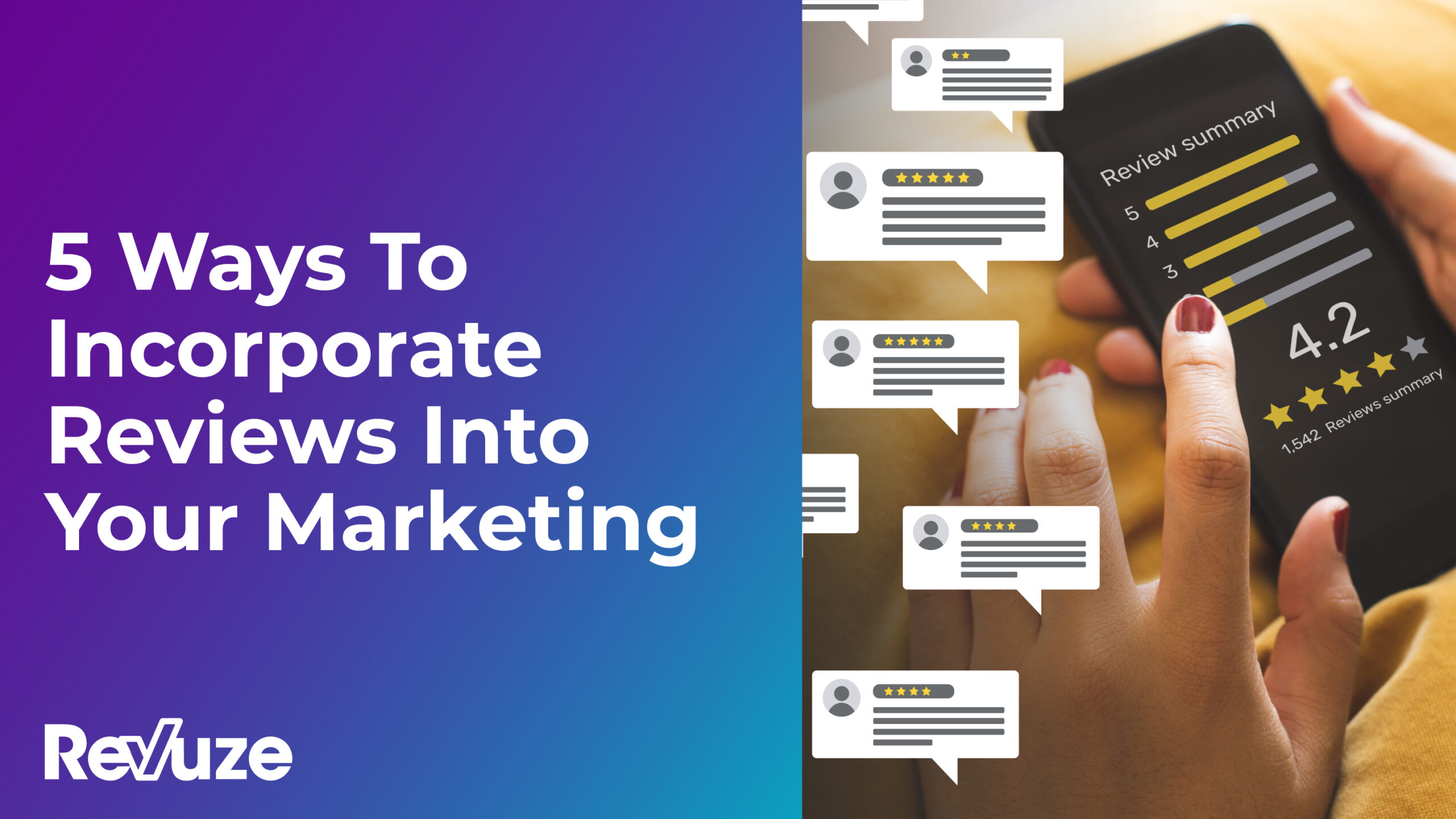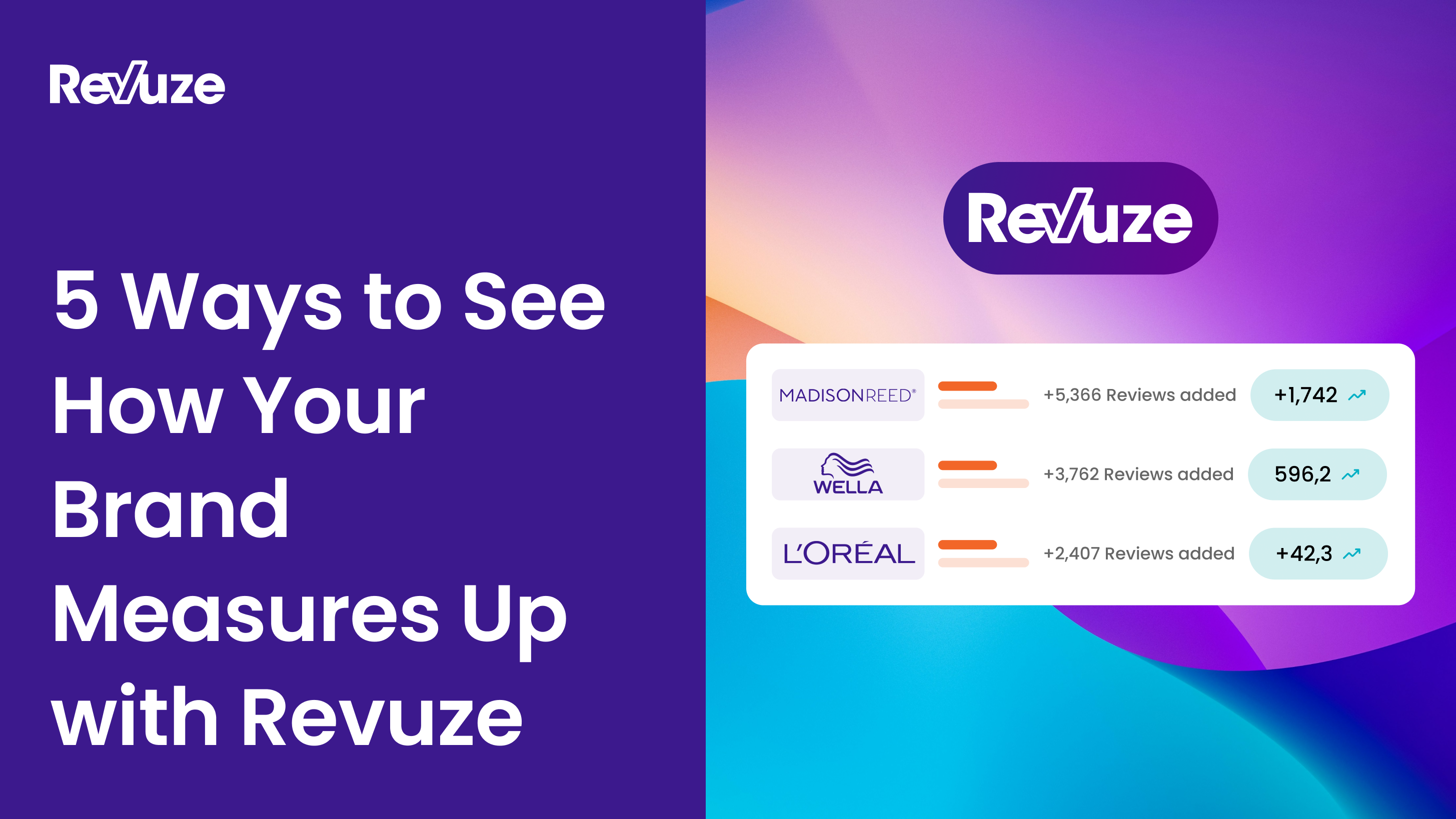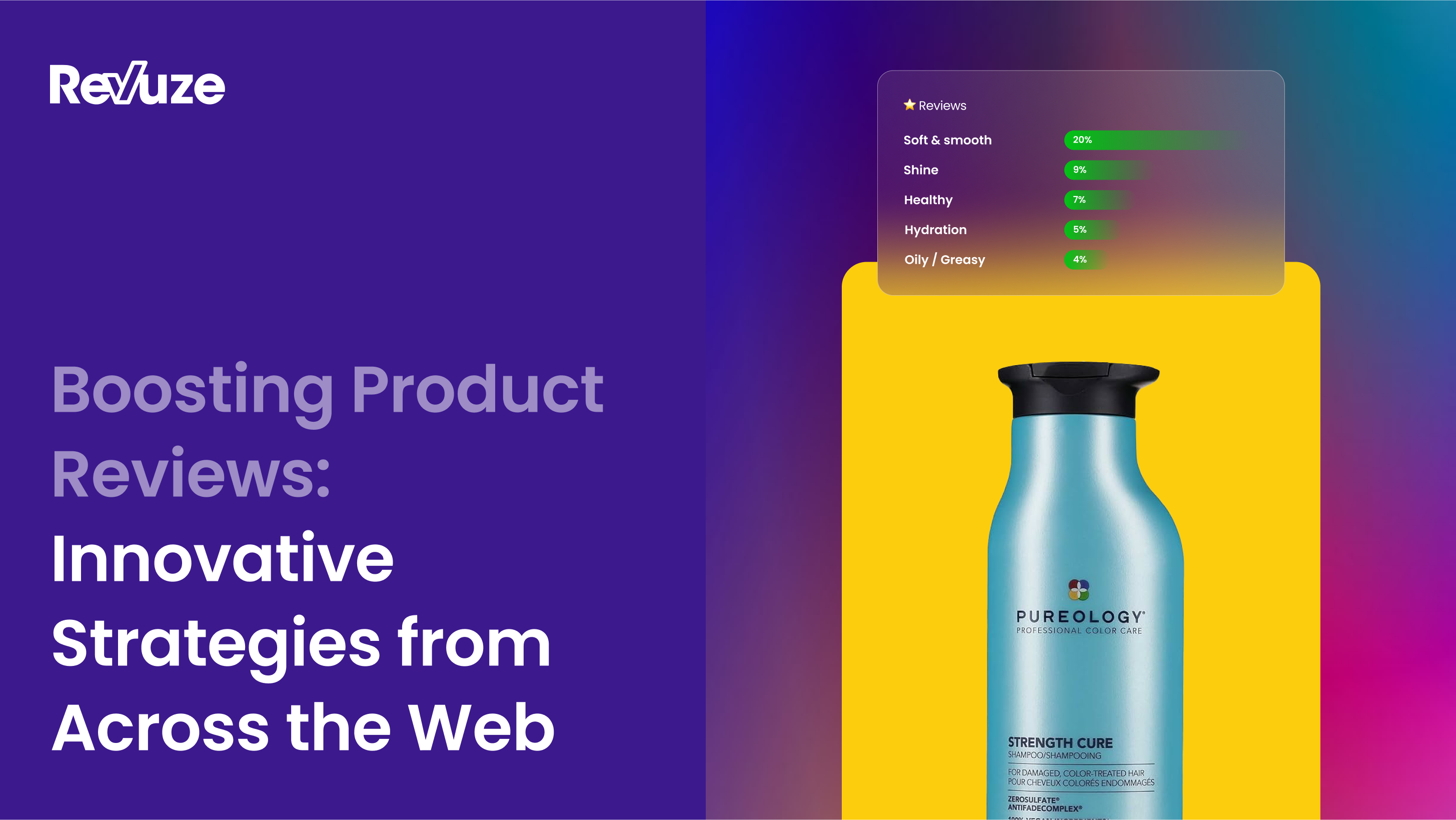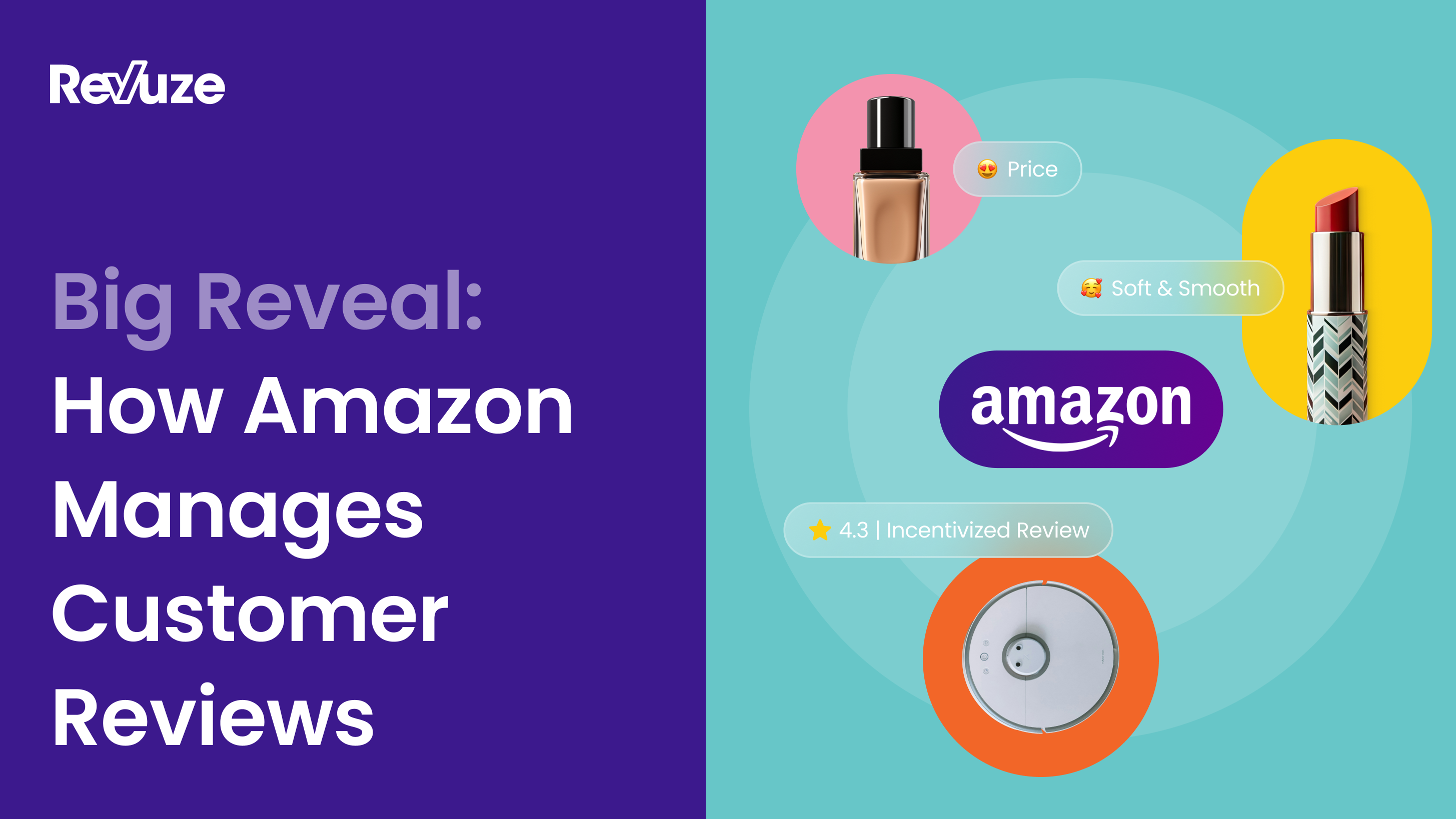
Reviews are a useful source of information, but don’t be fooled into thinking that’s all they can do. When incorporated into your marketing, reviews can be powerful tools to sway consumers to your side.
Incorporating feedback and customer opinion into marketing is nothing new. Ever since the first markets and bazaars appeared and humankind began to operate under an economy, word of mouth has been used to spread awareness of quality and let others know that a business is reliable.
Hear ye, hear ye, and all that.
In the twenty-first century, things are a little more complex than simply shouting on street corners. It requires careful thought and careful implementation, especially in the realm of e-commerce.
Today, let’s look at five ways in which you can use reviews in your e-commerce marketing, and how you might go about implementing them.
Here we go.
1. Adding reviews that highlight product features into your promotions
When marketing a product one of the main aims is to let customers know of its capabilities. After all, many consumers can be swayed to one product or another by superior capability.
Why would anyone buy your 32GB phone, for instance, if your competitor offers an otherwise comparable 64GB phone for a similar price?
By adding reviews into your promotions not only can you highlight your product’s superior capabilities, but you’ll also be using the perspective of the customer who left that review to your advantage.
In this promotion from Lancome USA, images of their new product are placed next to real customer reviews that highlight product features.

From these short, simple reviews the reader is told:
- The product has great coverage
- It is lightweight
- It has SPF Factor 25 coverage
- It provides a natural finish
Product features can be perfect in theory, but by grounding your promotion in the real world with a real user consumers are far more likely to believe your promotion.
Statistics can be misleading, real feedback is far more reliable in the consumer’s eye.
2. Turning reviews into customer success stories
While a short, snappy review might be enough to draw a consumer’s interest, sometimes you need something more concrete and in-depth in order to keep it.
Customer success stories are, put simply, longer-form narratives that detail how a customer used your product to solve a problem.
Customer success stories are seen as more attractive than simple technical information, simply by having a name and a face attached. After all, it’s shared experiences that consumers relate to, not dry statistics.
Don’t be fooled by the term “longer-form”, we’re not talking about essays here. Customer success stories only need the following components:
- The problem
- How your product solved the problem
- Testimony from your customer that adds a sense of validity
Unfortunately, customers don’t always lay these out exactly in their reviews. Because of this, you’ll have to fill in the blanks and craft the narrative yourself.
Scouring your reviews for an appropriate one can take time, but is greatly rewarding.
Got it? Good. Let’s take a look at a real example.
Not to blow our own trumpet, but Revuze’s customer success stories are a prime example of how to use feedback to your advantage. Today, we’re going to focus on this particular example from Char-Broil.

To begin, we used a simple headline that gives a simple piece of information – Char-Broil using Revuze’s platform to transform itself into a data-driven company
In this title, we’ve named the problem, the product used to solve it, and the organization that used their product to do so.
Simple, effective, and informative.
Further down, more information on the defined problem is provided alongside more detailed information on the situation for a more in-depth look.
 |
 |
Next, detailed information on how our Explorer platform was useful to Char-Broil is given.

Sprinkled throughout the page for emphasis, we have official quotes from reviews that shed further light on the situation.
 |
 |
With names and faces attached, these testimonies become that much more real and believable to the reader. It’s one thing to be given information by Revuze, it’s another to hear it from the mouths of our customers.
In addition, there are several short testimonies from our own team that really drive the point home.

To recap, Char-Broil’s customer success story included the three simple elements we discussed before: the challenge, solution, and real customer quotes. While the long case study might seem intimidating, it’s no different from any other customer success story.
3. Updating your website content to align with customer expectations
It’s no secret that consumers are fickle creatures. You need to constantly be updating your content in order to align with consumer expectations.
It’s estimated that nearly 20% of consumers have an attention span of perhaps four seconds when interacting with new content.
Four seconds!
Not even enough time to boil a kettle.
It’s largely attributed to so-called “information overload”, where readers are confronted with more new information than they can handle.
So, what do you do about it? Well, you use familiar language of course.
You’ve probably come across this yourself when you re-read something that you’ve read before. It’s easier the second time, right?
You can look at words and phrases in the same way. The language your customers use when talking about your brand will reveal what type of language they associate with you, and what type of language they’re used to using when discussing you.
There’s a reason reading legal documents is left to the lawyers.
So, what do you do? Well, you compare your content and the language used within to the discussion you see around you, your content, and your products and make adjustments accordingly.
By matching your language to that which your customers use you will hold their attention for longer, be easier to digest, and overall come across as more relatable and more in-tune with their desires.
Remember though, this is an evolving process. Your customer base might shift over time and as such your content will need to shift also.
4. Using SEO to improve your search engine standings
This one delves into the more technical side of marketing, so bear with us.
When you want to rank highly in search engine results, it’s not just about what the consumer types in. You see, search engine algorithms have their own criteria for how relevant a site or brand is which affects how high you rank.
Paid ads aside, the first link that pops up when you search for “Amazon” is always Amazon itself. That’s the kind of standing you should strive for with your brand.
Unfortunately, when your customers aren’t searching for you directly it’s a bit harder to rate highly on the rankings. It’s even trickier when you realize that the inner workings of search engines aren’t exactly public knowledge.
Google might tell us when they change the algorithms, but they don’t give out all the details.
So does this mean you’re stabbing in the dark? Well not exactly.
While we don’t know the exact ways in which search engines work, we know enough. We also know that when consumers search for certain products, they’ll use certain terminology and phrasing.
Think about the last time you googled something specific. Did you just type in broad terms that vaguely defined what you were looking for, or did you try to be precise?
The trick is knowing what your potential customer base will be searching for, and adding those specific keywords into your content in order to make the search engine flag it as more relevant.
So, the main question of the hour is, how do you know what keywords to use?
Simple.
Reviews.
The language that is used in reviews will indicate what phrases, wordings, etc. they would use when searching for a product in a search engine.
These can boil down to word choices too, with some words having identical meanings but very different results when entered into a search engine.
Gigabyte or GB?
Pure cotton or 100% cotton?
Coverage or cover?
It’s never quite that straightforward to know how your customers will talk about you, you have to look for it. Fortunately, Revuze can help.

Revuze’s Explorer platform allows you to delve into the keywords surrounding your brand, product categories, and even individual products. It’s a simple, easy-to-use system, with the size of the respective word representing how much it’s used within your consumer reviews.
Are all of the words on the word cloud going to be directly relevant to SEO?
Well, no. Some of them are a bit too vague or commonplace to try and rank for directly in searches. What you need to do is look into which keywords are specific to your industry, and try to rank for those.
Let’s imagine for a second that you’re an e-commerce store dealing (at least partially) in headphones. The above word cloud is a great example of what chatter you might see around these within reviews.
As you can see, “sound” is the most highly ranked word, but it isn’t too relevant by itself. The word sound is rarely going to be searched for by itself in this context.
Ranking lower is “sound quality”. This makes sense, as the specific phrase is naturally going to be used less than a word within it.
However, this one is the golden goose.
“Sound quality” is a key phrase that links specifically to headphones as a product. Rank highly for this, and you’ll be on your way to ranking highly on search engine results pages.
And … repeat.
One keyword isn’t enough. There are plenty in the word cloud that you can aim for, notably “battery life” and “charge” being almost as present in review text as sound quality.
You’ve got to hit all the right notes you see, or your tune isn’t going to resonate with consumer searches.
In addition, SEO is an evolving discipline that isn’t ever done. Times change, consumers change, and the terms they use to search change too. You must monitor your SEO to keep up or be left in the dust.
5. Incorporating reviews into your content
Incorporating reviews themselves is a great way to hit SEO keywords. After all, what’s a better way to make sure your content uses the same keywords as reviews than simply adding reviews directly into it?
Well, there’s a catch. As we discussed before, SEO looks for out-of-place text that doesn’t flow well. Simply sticking reviews randomly won’t work, you need to use them to highlight your content.
What exactly your content is doesn’t matter in this case. What does matter is how you incorporate reviews into it.
Let’s look at some real examples of actual reviews this time, and see how other e-commerce brands have used them to highlight their content.

Crate & Barrel’s home page sneaks in a review for its spotlight collection down in the bottom left corner. It’s non-intrusive and doesn’t take your ability to view the page away, but it definitely sticks out enough to influence the reader’s perception.
The example follows the SEO rules that were laid out earlier. They blend in well with the content, don’t seem to come out of nowhere, and are small and non-intrusive enough not to be a turn-off to readers.
Wrapping up
Hopefully, you’ve learned something new about how to use reviews in your marketing from us today. If these weren’t quite what you were looking for, don’t fret! More articles are planned around using reviews for:
- Sales
- Product development
- Data science
We’re Revuze, and reviews are our game after all.
See what we did there? Eh?
In the meantime, why not check out our guide to review analysis that will help you get that little bit more information out of what customers leave behind?
Happy (review) hunting!
 All
Articles
All
Articles Email
Analytics
Email
Analytics








 Agencies
Insights
Agencies
Insights